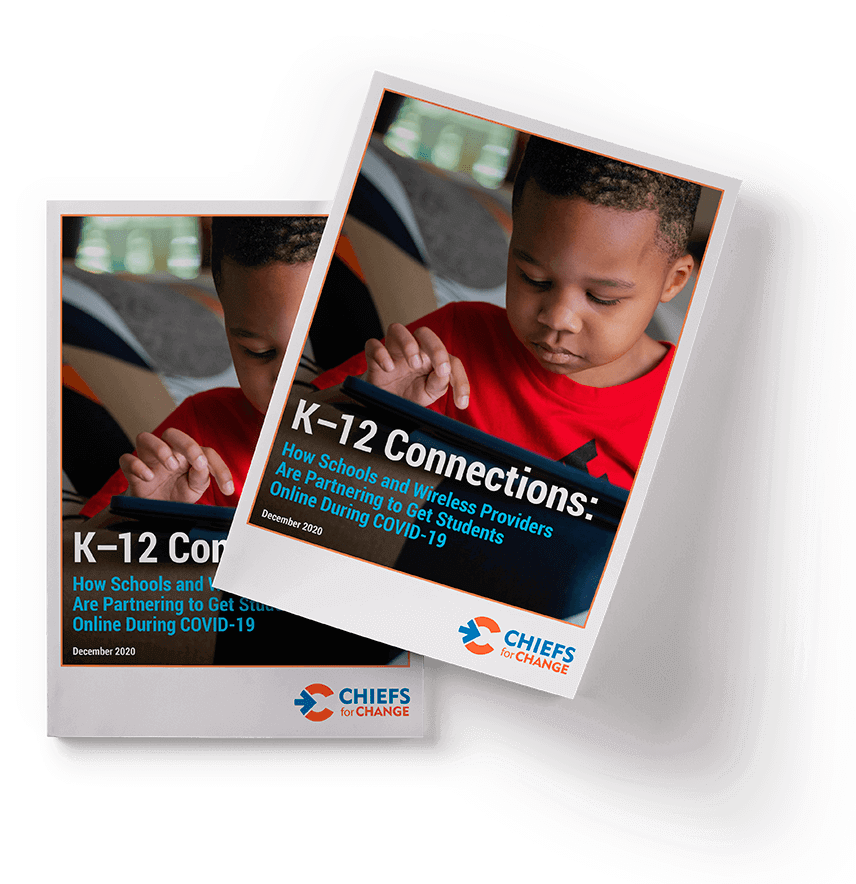The wireless industry is
keeping America’s
students connected during
COVID-19.
As schools around the country work to mitigate the risk of coronavirus, wireless providers have quickly stepped up to make sure homebound children have the tools they need to participate in distance learning and stay engaged with their classmates and teachers from afar.
To date, the industry has helped connect 2.4 million students by providing free and discounted devices and data plans, as well as millions of dollars in donations and resources. Learn more about how the wireless industry is helping, and how we continue to partner with school districts and governments to keep kids connected.
The wireless industry has long partnered with schools to expand connectivity opportunities, particularly in underserved communities—in almost 1 in 5 households, the only internet connection is a smartphone. Since March 2020, the industry has intensified efforts to connect students.
Wireless providers have worked with state and local governments and school districts across the country to connect America's students.
See Data by StateThe wireless industry’s Connecting Kids Initiative is a new resource for schools and school districts to help keep kids learning in these unprecedented times.
CTIA launched the Connecting Kids Initiative to simplify the process for school districts to find remote learning hotspot solutions by connecting them with wireless operators working to provide broadband access to kids and families in their area.
School districts are encouraged to submit their connectivity needs, and CTIA will help connect them to participating carriers, including the three nationwide wireless operators and regional operators across the country.

 School Districts
School Districts
The submission must be from an official representative of a school district with responsibility for procuring and managing technology and connectivity solutions. We will share your request with participating wireless operators in your community that are working hard to connect kids and families. Please remember there may be other broadband options in your community beyond our participating carriers that could help address your needs as well. Carriers will follow-up with you directly if there is a good match. Please direct any questions to [email protected].
 Parents and Teachers
Parents and Teachers
Please reach out directly to your wireless provider to explore your options to enable hotspot-functionality on your smartphone or other wireless device to support remote learning. Please share this initiative with your school district, as we can only process requests from school districts.

During the pandemic, the wireless industry expanded and enhanced their existing education programs.
Wireless hotspots are helping kids access school programs on a laptop, tablet or directly from the smartphone.
Nationally, over 29 million children are eligible for low-cost or free school lunches, a critical support system under threat with the closure of so many American schools. The wireless industry is doing our part to provide meals for students and their families in this time of need.
Providers are also investing in educational programs and services that will help engage children in new forms of immersive, online learning.
The industry also knows how hard teachers are working to adapt their lesson plans to distance learning and keep their students engaged and we’re supporting them by offering new tools and services to make the transition easier.
Over two million kids—including some of the most at-risk populations—have the internet connectivity necessary for their learning needs thanks to wireless hotspots. Read the full report to learn more about how the U.S. wireless industry is working with forward-thinking educational leaders to connect America’s children to the educational resources they need.
Download the Report
CTIA Mobile Minute is a free e-newsletter featuring the wireless products and services that empower, inspire and entertain. Accept no substitute; CTIA Mobile Minute is the best daily hand-selected compilation of wireless news today!